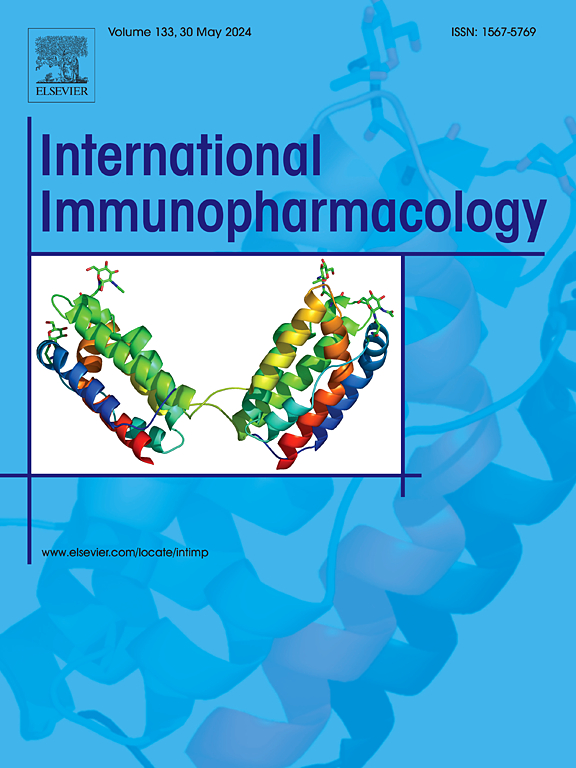Clemastine fumarate alleviates endoplasmic reticulum stress through the Nur77/GFPT2/CHOP pathway after ischemia/reperfusion in rat hearts
IF 4.8
2区 医学
Q2 IMMUNOLOGY
引用次数: 0
Abstract
Background and purpose
Clemastine fumarate (CLE) is an H1 receptor (H1R) antagonist that is used clinically to treat various allergic disorders. It blocks histamine release from mast cells and inhibits H1R. Preliminary studies have shown that CLE can reduce myocardial ischemia/reperfusion (I/R) injury. In this study, we confirmed the efficacy of CLE against myocardial I/R injury using in vivo and in vitro examinations.
Experimental approach
To test the efficacy of CLE against myocardial I/R injury, we established a rat model of myocardial hypoxia/reperfusion injury. A series of assessments were conducted to determine cardiac function, measure areas of myocardial infarction, and analyze the histopathological changes. Additionally, we developed a rat model of cardiomyocyte hypoxia/reoxygenation (H/R); in both models, we quantified the expression levels of key markers and cardiac injury-specific proteins to assess the biochemical milieu influenced by CLE treatment.
Key results
Our findings demonstrated that CLE reduced the expression of nerve growth factor-induced gene B (Nur77), glutamine-fructose-6-phosphate transaminase 2 (GFPT2), and C/EBP homologous protein (CHOP) and decreased the area of myocardial infarction and the degree of endoplasmic reticulum stress. CLE pretreatment ameliorated abnormal fibers and myocardial edema and reduced the inflammatory cell infiltration caused by I/R injury. While Nur77 overexpression aggravated cardiac function, these effects were ameliorated by the downregulation of Nur77.
Conclusion and implications
We anticipate that these results validate the hypothesis that CLE mitigates apoptosis and reduces endogenous stress within myocardial cells by modulating Nur77, GFPT2, and CHOP expression. These findings elucidate the therapeutic mechanisms by which CLE alleviates myocardial I/R injury. In addition, they will serve as a new theoretical foundation for developing future treatment strategies and enhancing clinical applications in cardiac care.
求助全文
约1分钟内获得全文
求助全文
来源期刊
CiteScore
8.40
自引率
3.60%
发文量
935
审稿时长
53 days
期刊介绍:
International Immunopharmacology is the primary vehicle for the publication of original research papers pertinent to the overlapping areas of immunology, pharmacology, cytokine biology, immunotherapy, immunopathology and immunotoxicology. Review articles that encompass these subjects are also welcome.
The subject material appropriate for submission includes:
• Clinical studies employing immunotherapy of any type including the use of: bacterial and chemical agents; thymic hormones, interferon, lymphokines, etc., in transplantation and diseases such as cancer, immunodeficiency, chronic infection and allergic, inflammatory or autoimmune disorders.
• Studies on the mechanisms of action of these agents for specific parameters of immune competence as well as the overall clinical state.
• Pre-clinical animal studies and in vitro studies on mechanisms of action with immunopotentiators, immunomodulators, immunoadjuvants and other pharmacological agents active on cells participating in immune or allergic responses.
• Pharmacological compounds, microbial products and toxicological agents that affect the lymphoid system, and their mechanisms of action.
• Agents that activate genes or modify transcription and translation within the immune response.
• Substances activated, generated, or released through immunologic or related pathways that are pharmacologically active.
• Production, function and regulation of cytokines and their receptors.
• Classical pharmacological studies on the effects of chemokines and bioactive factors released during immunological reactions.

 求助内容:
求助内容: 应助结果提醒方式:
应助结果提醒方式:


